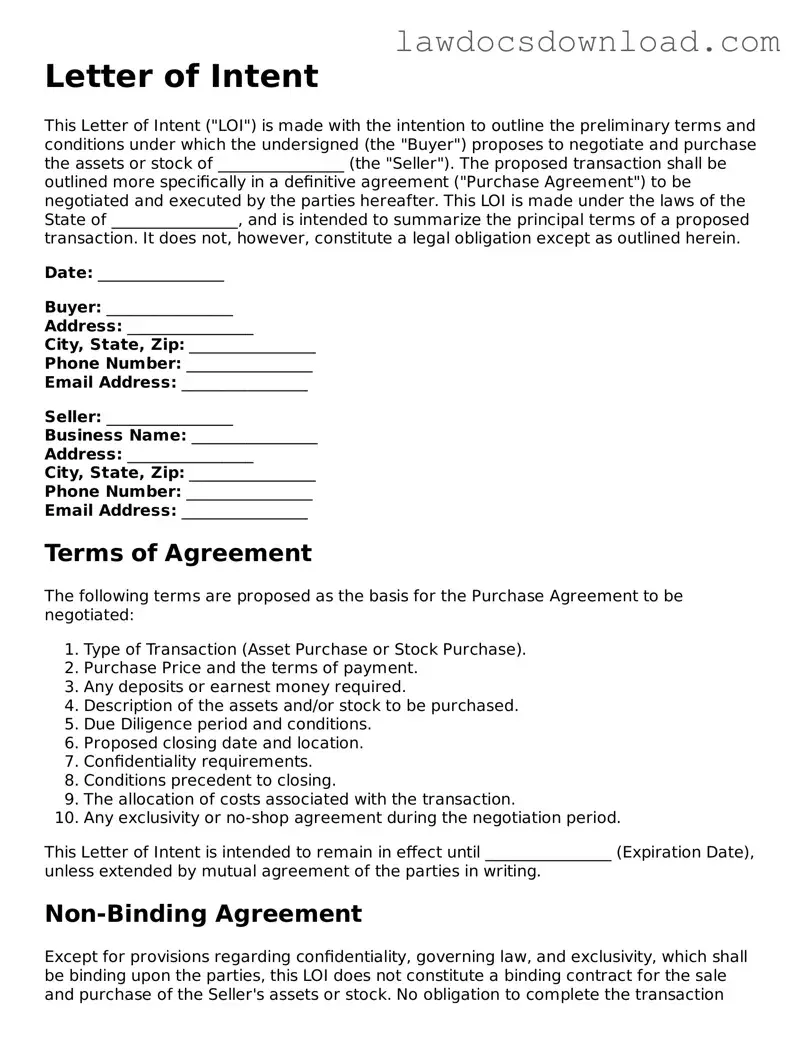Letter of Intent
This Letter of Intent ("LOI") is made with the intention to outline the preliminary terms and conditions under which the undersigned (the "Buyer") proposes to negotiate and purchase the assets or stock of ________________ (the "Seller"). The proposed transaction shall be outlined more specifically in a definitive agreement ("Purchase Agreement") to be negotiated and executed by the parties hereafter. This LOI is made under the laws of the State of ________________, and is intended to summarize the principal terms of a proposed transaction. It does not, however, constitute a legal obligation except as outlined herein.
Date: ________________
Buyer: ________________
Address: ________________
City, State, Zip: ________________
Phone Number: ________________
Email Address: ________________
Seller: ________________
Business Name: ________________
Address: ________________
City, State, Zip: ________________
Phone Number: ________________
Email Address: ________________
Terms of Agreement
The following terms are proposed as the basis for the Purchase Agreement to be negotiated:
- Type of Transaction (Asset Purchase or Stock Purchase).
- Purchase Price and the terms of payment.
- Any deposits or earnest money required.
- Description of the assets and/or stock to be purchased.
- Due Diligence period and conditions.
- Proposed closing date and location.
- Confidentiality requirements.
- Conditions precedent to closing.
- The allocation of costs associated with the transaction.
- Any exclusivity or no-shop agreement during the negotiation period.
This Letter of Intent is intended to remain in effect until ________________ (Expiration Date), unless extended by mutual agreement of the parties in writing.
Non-Binding Agreement
Except for provisions regarding confidentiality, governing law, and exclusivity, which shall be binding upon the parties, this LOI does not constitute a binding contract for the sale and purchase of the Seller's assets or stock. No obligation to complete the transaction contemplated by this LOI shall arise unless and until a definitive Purchase Agreement is executed and delivered by all parties involved.
Governing Law: This LOI shall be governed by the laws of the State of ________________.
Acceptance
If the foregoing terms are acceptable, please sign and return a copy of this LOI by ________________ (Response Due Date). Execution of this LOI by both parties shall signify their intention to proceed in good faith to negotiate and attempt to enter into the Purchase Agreement.
Buyer's Signature: ________________
Date: ________________
Seller's Signature: ________________
Date: ________________
